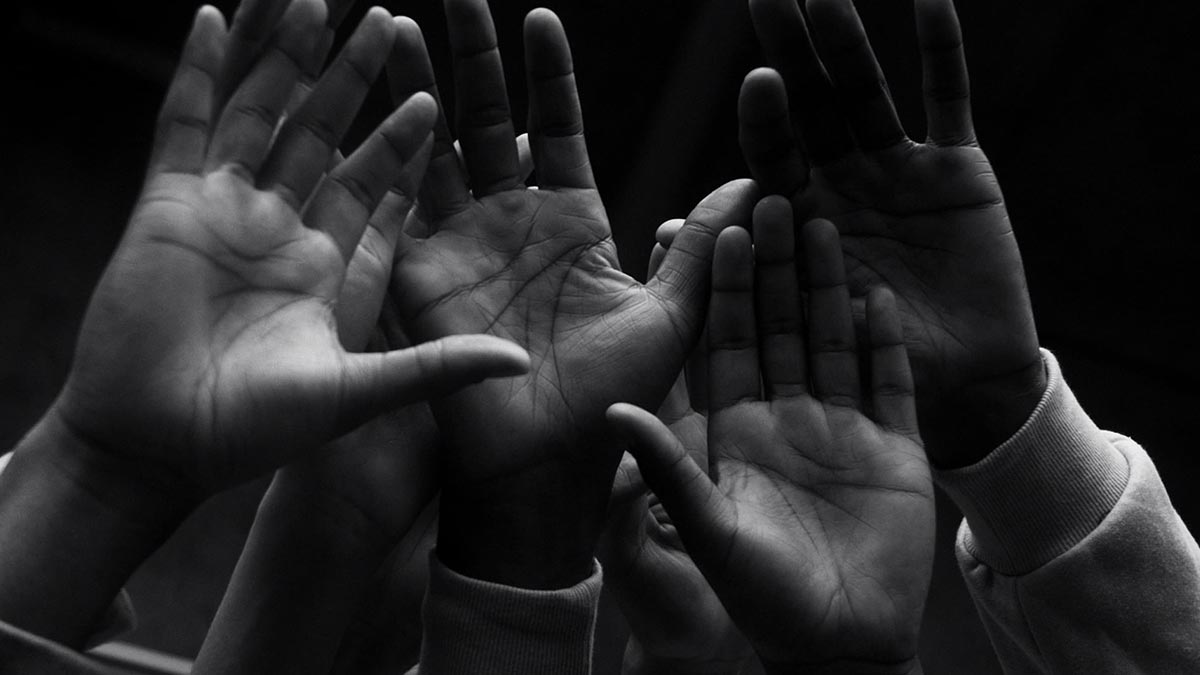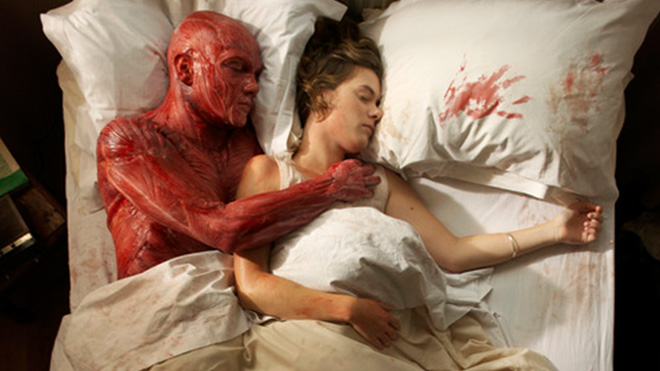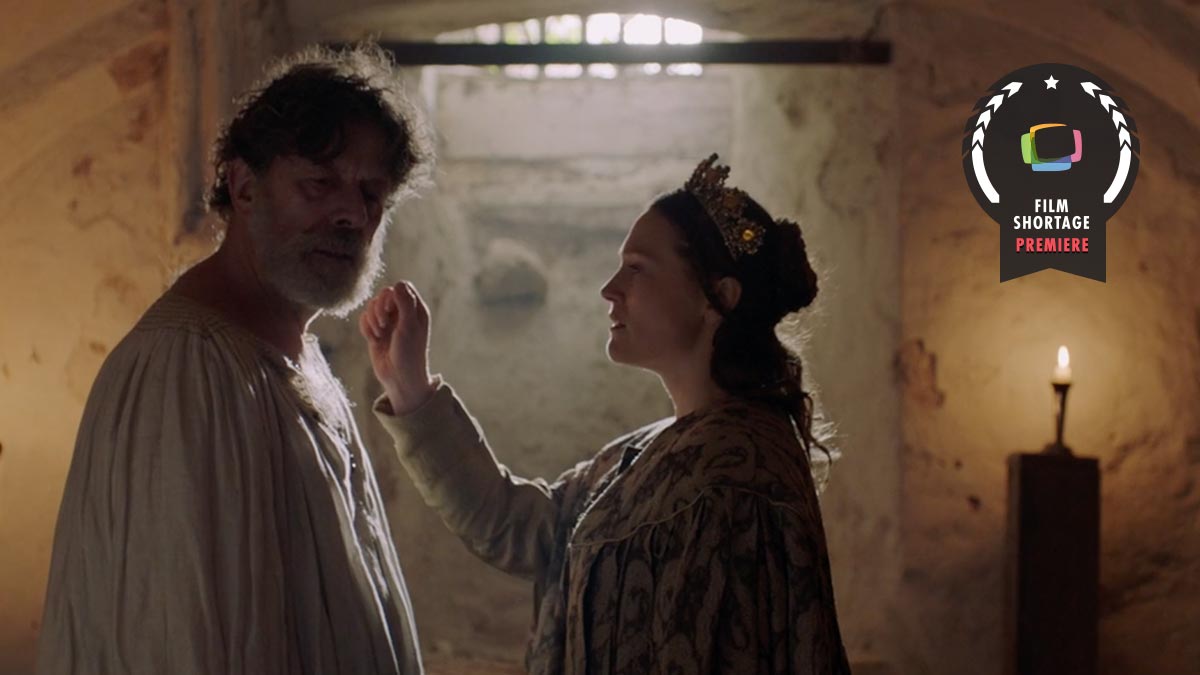A film about mental health, the power of personal demons, and the importance of friendships that see us through.
“14 Years” presents a riveting exploration of mental health and human connection in the bustling backdrop of modern-day New York City. Inspired by the ancient Hindu epic, The Ramayana, this psychological thriller delves into the depths of protagonist RAM’s psyche, portrayed by Samrat Chakrabarti, known for his role in “Midnight’s Children.” As RAM grapples with his failed aspirations and battles his inner demons, his mundane existence is disrupted by the persistent intrusion of his neighbor HANU, played by Ajay Naidu of “Office Space” fame. What begins as an innocuous interaction soon spirals into a dark and drug-fueled descent, challenging both characters to confront their own vulnerabilities and the profound impact of human connection on mental well-being.
Director Ronald Austin, Jr. masterfully navigates the complexities of mental health and interpersonal relationships, weaving together a narrative that is as compelling as it is thought-provoking. Through the lens of RAM and HANU’s tumultuous journey, “14 Years” shines a spotlight on the power of personal demons, the fragility of the human psyche, and the redemptive force of friendship. As audiences are drawn into the gripping narrative, they are invited to confront their own perceptions of mental health and the profound significance of supportive relationships in navigating life’s darkest moments. Read our full interview with Ronald below.

The film draws inspiration from the ancient Hindu epic The Ramayana. Can you discuss how elements of this mythological tale are woven into the narrative of “14 Years,” and what themes or motifs from The Ramayana resonate with the modern-day setting of the film?
“14 Years” is the tale of a New York City artist whose journey is inspired by the Ramayana, one of South Asia’s most profound narratives. We aimed to weave themes from this epic into our story, subtly introducing Western audiences to its emphasis on friendship and community.
Specifically, our narrative draws from a segment of the Ramayana where Ram, a central character, embarks on a quest to rescue his wife, Sita, from the demon King Ravana. Assisted by his younger brother, Laxman, Ram encounters the king of the monkeys in the jungle. Together, they defeat a forest demon, securing assistance for Ram in reclaiming Sita.
As the story unfolds, Ram, Laxman, and their new ally, Hanuman, face challenges, including the onset of monsoons. Despite Ram’s reluctance, Hanuman persuades him to wait out the torrential rain in a cave. During this six-month period, Ram experiences a rare moment of doubt and defeat, a significant deviation from his usual resilience in the epic. However, with the support of Hanuman and Laxman, he perseveres through the monsoons and ultimately rescues Sita.
The essence of our film lies in the notion that confronting our inner demons requires patience and companionship. It underscores the importance of friendship and community in overcoming doubt and fear. In our portrayal, the accordion symbolizes Sita, and when Ram plays it again at the end, it signifies his rediscovery of passion, mirroring the victory of the real Ram in the Ramayana as he defeats Ravana and reunites with Sita.

“14 Years” is described as a psychological thriller set in modern-day NYC, exploring themes of mental health, self-loathing, and the power of friendship. What inspired you to delve into these themes, and how did you approach portraying the complexities of mental illness and personal struggles on screen?
The inspiration behind delving into a narrative about mental health stems from the overwhelming noise present in today’s world. Whether it’s the constant bombardment of notifications, messages, and emails in our digital lives, or the upheaval happening globally, there’s an incessant cacophony vying for our attention. This cacophony further exacerbates the already fragmented landscape of mental health. Thus, we sought a means for individuals to viscerally experience the internal and external noise surrounding them.
Recognizing the significance of sound alongside visuals, we dedicated considerable time and effort to our sound design and score. Our team meticulously pondered how best to depict Ram’s struggles on screen in a responsible manner. One crucial decision was to abstain from showing him hanging himself. This choice arose after numerous discussions aimed at immersing viewers in Ram’s journey towards an uplifting resolution, all the while avoiding triggers or lasting distress.
Moreover, through meticulous production design and diverse settings, we utilized physical environments to mirror Ram’s emotional state. For instance, the dirty, cluttered apartment serves as a visual representation of his current state of fear, while the rooftop symbolizes liberation from that fear through the pursuit of passion.
The film stars Samrat Chakrabarti as RAM and Ajay Naidu as HANU, two characters whose lives intersect in unexpected ways. Can you discuss the casting process and what drew you to these actors for their respective roles? How did their performances contribute to the overall tone and emotional impact of the film?
Samrat Chakrabarti, a cherished friend and integral collaborator to nearly every member of our creative team, played a pivotal role in the conception and execution of our film. His portrayal as the lead character was central to our vision, and through his connection with Ajay, he facilitated Ajay’s involvement in the project, ultimately casting him as Hanuman. Samrat’s willingness to delve into the depths of his character’s psyche, exploring both light and dark aspects of the story, was unparalleled. His dedication to his craft and unwavering commitment ensured the authenticity of our narrative. Additionally, Samrat’s comedic prowess added a touch of levity essential to capturing the essence of our New York City tale.
Ajay Naidu, a stalwart of the indie acting scene, brought a profound depth to his portrayal of Hanuman. His ability to convey the weight of a Shakespearean tragedy resonated both on and off screen, embodying the essence of the mighty warrior. Ajay’s contribution was instrumental in bringing the epic nature of our story to life.

“14 Years” is praised for its incredibly moving and powerful tone. Can you discuss the process of crafting the film’s atmosphere and progression, particularly in building towards the unforgettable crescendo and finale? What cinematic techniques or storytelling devices did you employ to evoke such a strong emotional response from the audience?
Central to establishing the tone of our film was ensuring that viewers were immersed in Ram’s journey, experiencing his struggles firsthand. Only by confronting the depths of his experiences could we guide the audience towards a place of trust, where they could relinquish their preconceived notions and journey with us towards the light at the end of the tunnel. This immersive experience was crafted through meticulous attention to production design, music selection, and the skillful editing of our esteemed editor, Jonah Moran, whose contribution was indispensable to the film’s realization. Additionally, the evocative score by Ryan Seaton and the precise sound design by Kevin Peters, along with the entire post-production team, played integral roles in creating a sensory landscape that transported viewers on an otherworldly adventure, dropping them into the heart of Ram and Hanuman’s journey through the monsoon season.
Ultimately, our aim was to narrate a tale of struggle that resonates with audiences, reminding them of the purpose of their existence. Through careful crafting of tone, we believe we achieved this goal, inviting viewers to embark on an emotional odyssey alongside our characters.
How did you approach portraying the internal struggles of the characters, particularly RAM, and what insights did you hope to convey about the nature of mental health and self-discovery through their journey?
In portraying the internal struggles of the characters, particularly Ram, we approached the narrative with a deep understanding of the intricate dynamics at play. Ram, as the sole character in the film, is not alone in his journey; rather, he grapples with manifestations of his subconscious—the enigmatic Hanu and the menacing Rav. These entities emerge from the moment Ram hangs himself and slips into the liminal space between consciousness and unconsciousness. It’s within this realm, on the precipice of life and death, that the battle for control over Ram’s existence unfolds.Hanu represents Ram’s light, his resilience, and hope, while Rav embodies his shadow self, his inner turmoil, and darkness. Their conflict mirrors the internal struggles of Ram himself, as he navigates the complexities of mental health and self-discovery. Through their journey, we aimed to convey profound insights into the nature of mental health. We wanted to illustrate the complexities of the human psyche, highlighting the perpetual struggle between light and darkness within us all.By delving into Ram’s internal world, we sought to depict the nuances of mental illness and the profound impact it can have on an individual’s sense of self. We aimed to shed light on the importance of self-awareness and self-acceptance in the journey towards healing and self-discovery. Ultimately, we hoped to convey the message that acknowledging and confronting one’s inner demons is essential for personal growth and resilience in the face of adversity.

Can you discuss the significance of the bond between RAM and HANU, and how their relationship evolves over the course of the story? What message or takeaway do you hope viewers will find in the portrayal of this friendship?
The bond between Ram and Hanu serves as the emotional core of the story, evolving significantly as the narrative unfolds. Initially, Hanu emerges as a guiding force, representing Ram’s inner light and resilience amidst his struggles. As the story progresses, their relationship deepens, evolving into a profound friendship rooted in mutual understanding and support.
Throughout their journey, Ram and Hanu face numerous challenges, both internal and external. Hanu remains a constant source of strength for Ram, offering guidance and encouragement during moments of doubt and despair. In turn, Ram learns to trust Hanu, allowing himself to lean on their friendship for support.
As the narrative unfolds, viewers witness the transformative power of friendship in overcoming adversity. Through their bond, Ram and Hanu navigate the complexities of mental illness and self-discovery, ultimately emerging stronger and more resilient. Their relationship serves as a poignant reminder of the importance of companionship and solidarity in times of struggle.
Ultimately, we hope viewers will find inspiration in the portrayal of Ram and Hanu’s friendship, recognizing the profound impact of genuine connection and support. Their story encourages viewers to embrace the power of friendship, reminding us that we are never truly alone in our struggles.
How did you use the urban environment to enhance the storytelling and deepen the audience’s connection to the characters and their struggles?
In “14 Years,” the urban setting of New York City serves as a dynamic backdrop that enhances the storytelling and connects audiences to the characters’ struggles. The city’s bustling streets and diverse neighborhoods reflect the chaos of Ram’s mind, while its vibrant atmosphere provides a rich context for his journey. During the roof scene, through the juxtaposition of the building’s bright lights with Ram’s internal darkness, we deepen the audience’s empathy and understanding of his challenges, creating a compelling and relatable experience.
Mental health is a prominent theme in the film. What message or conversation do you hope “14 Years” will spark regarding the stigma surrounding mental illness and the importance of seeking support and understanding?
“14 Years” aims to spark a conversation about mental health stigma and the significance of seeking support and understanding. By depicting the protagonist’s journey through struggles and triumphs, we hope to highlight the importance of destigmatizing mental illness and encouraging open dialogue surrounding it. Ultimately, we aim to convey the message that seeking support and understanding is crucial for individuals navigating mental health challenges.
What draws you to the short film format?
The challenge lies in crafting a complete, three-act cinematic story within a concise timeframe of less than 20 minutes. This necessitates overcoming various hurdles and barriers, pushing filmmakers to refine their storytelling techniques and devise more creative methods to achieve cinematic and narrative impact. Through careful attention to characters, setting, visual elements, and sound design, the entire team strived to maximize the effectiveness of every moment on screen.
Finally, what are your favorite short films out there?
Without a doubt, our favorite short film ever made was CURFEW by Shawn Christensen




